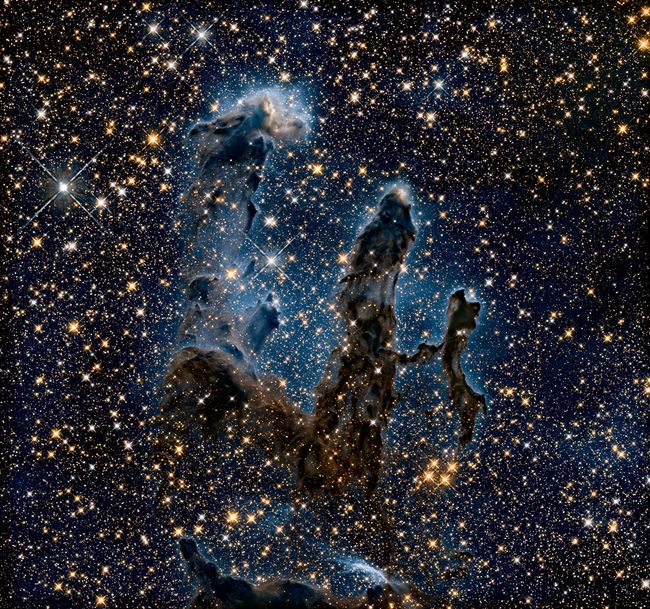Science
Related: About this forumHubble image reveals the mighty baby stars that will probably destroy the 'Pillars of Creation'
Hubble image reveals the mighty baby stars that will probably destroy the 'Pillars of Creation'
By Brandon Specktor - Senior Writer 12 hours ago
The Pillars, which span about 5 light-years in length (that's about 3.5 times the diameter of our solar system), are natural incubators of star formation, thanks to their many dense pockets of hydrogen gas, according to NASA. As ever greater quantities of gas and dust pile into a single, gravitationally-dense area, that area heats up under the weight of the gathering material and may turn into the seeds of a star — also called a "protostar." If a protostar continues gathering mass and increasing in temperature enough to spark a nuclear reaction at its core, a full-fledged star is born.

The iconic 'Pillars of Creation' glow anew in infrared light.
(Image: © NASA, ESA/Hubble and the Hubble Heritage Team)
Spearing the sky like monolithic elephant trunks, the "Pillars of Creation" are a vast region of star-forming material located in the Eagle Nebula, about 6,000 light-years from Earth. These tendrils of gas and dust, made colorful by the radiation of bright young stars smoldering within, became a Milky Way landmark thanks to an iconic visible-light image taken by the Hubble Space Telescope in 1995.
Now, NASA scientists have shared a new view of the pillars, focusing instead on the infrared radiation normally invisible to human eyes. In the new infrared image (also taken by the Hubble Space Telescope), the colorful pillars fade to ghosts of their former selves, revealing a kaleidoscope of newborn stars within the dust.
The Pillars, which span about 5 light-years in length (that's about 3.5 times the diameter of our solar system), are natural incubators of star formation, thanks to their many dense pockets of hydrogen gas, according to NASA. As ever greater quantities of gas and dust pile into a single, gravitationally-dense area, that area heats up under the weight of the gathering material and may turn into the seeds of a star — also called a "protostar." If a protostar continues gathering mass and increasing in temperature enough to spark a nuclear reaction at its core, a full-fledged star is born.
More:
https://www.livescience.com/pillars-of-creation-infrared-view.html?utm_source=notification
localroger
(3,626 posts)The Voyager spacecraft which are generally reckoned to be reaching the edge of the solar heliopause, far beyond what most people would call the "diameter of the solar system," are about 150 AU out or about one light day.